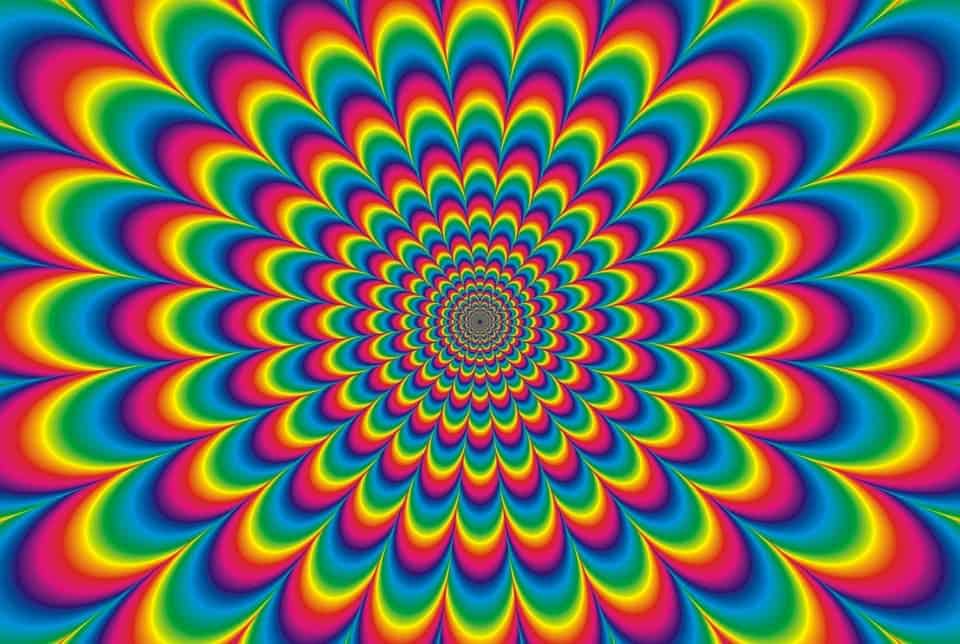
It’s common for people who’ve tripped on LSD to describe the experience as overwhelming, like feeling a million things at once. A new study suggests the drug alters consciousness by disrupting a brain signaling pathway that normally filters out non-critical information, essentially keeping us sane by stopping a barrage of sensory overload.
How LSD makes you trip
Scientists have previously proposed that LSD and other similar psychedelics (i.e. psilocybin, also known as “magic mushrooms”) work their magic by altering signaling in the thalamus. This mass of gray matter situated at the rostral end of the brainstem is like a network node, responsible for detecting and relaying information from all the senses (except smell), along with motor control, to the appropriate places in the cerebral cortex. The thalamus also acts as an information filter, removing things that it perceives as irrelevant, thus preventing sensory overload. This theory explains why even the most trivial things become intriguing while tripping on psychedelics.
This hypothesis was investigated by a team of researchers led by Katrin Preller, a psychiatrist at the University Hospital for Psychiatry Zurich. In a double-blind, randomized, placebo-controlled study, 25 healthy volunteers were given a dose of LSD, or a dose of LSD after pretreatment with ketanserin — a drug designed for hypertension that also targets and blocks the serotonin 2A receptor (5-HT2A receptor). Serotonin is suspected to be the molecular pathway that mediates the thalamus’ ability to filter sensory inputs.
While they were tripping (or on a placebo), the participants had their brains scanned. The results showed that in participants under the influence of LSD, the thalamus let more information through to some parts of the brain and suppressed information to other regions. Going deeper, this seems to happen because LSD alters activity in the striatum, which in turn enhances connections between the thalamic filter and the PCC (posterior cingulate cortex). What’s more, when ketanserin was administered prior to taking LSD, the psychedelic’s mind-altering effects were blocked, the authors reported in the journal PNAS.
It’s not entirely clear how messing with the thalamus can cause astonishing hallucinations and mind-blowing experiences. However, this model seems to get a lot of things right, with the PCC seemingly playing a crucial role, along with other components in the chain, such as serotonin and the striatum (which is critical for voluntary motor control). A 2015 study published in the journal Cell found that the “posterior cingulate plays a key role in merging self-location and body ownership.” Most often, an LSD trip is described as a dissolution of the self or of the ego, making a person feel connected with “oneness”.
Previously, Preller and colleagues found that LSD reduced activity in the posterior cingulate cortex and the temporal cortex.
“Our study suggests that the effect of LSD to alter self-experience (i.e. ego-dissolution) also impacts self-experience during social interaction in a way that the borders between self and other are more blurry than usual. Furthermore, this has an impact on basic social abilities,” Preller told ZME Science in an e-mail.
Learning more about how exactly LSD works is important in a context where the drug is becoming and more appealing for therapy. On one hand, the psychoactive effects of LSD mirror some symptoms of depression and schizophrenia, so research like this could one day help us find better treatments and drugs that target common molecular pathways. On the other hand, the drug itself — in conjunction with assisted therapy by a professional — has been shown to improve outcomes for patients struggling with severe PTSD or addiction.
“Taken together, the results deepen our knowledge about the mechanism of action of psychedelics relevant for health and disease and important for the development of new pharmacological therapeutics,” the authors conclude.


